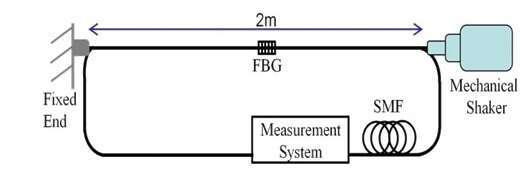
Invited
Recent Advances in Fast Brillouin Fiber-Optic Sensing
During the last few years the capabilities of Brillouin distributed fiber-optic sensing have been extended to dynamic scenarios. Some of the newly developed techniques have the potential to partly outperform the currently offered competing technologies.
For years Brillouin fiber-optic distributed sensing has been basically a static measurement technique with a widely acceptable spatial resolution of the order of 1 m, supposedly limited by the not-short-enough phonon lifetime. As such, this powerful sensing technique was not suitable for structural health monitoring (SHM). This class of applications, aiming at securing the safety of structures by continuous tracking of the strain field along and around critical locations, requires dynamic (hundreds of Hz) sensing capabilities and centimetric spatial resolution.
Towards the end of the last decade spatial resolution was drastically improved to the level required for SHM. This crucial step was followed by the development of dynamic Brillouin techniques to be reviewed in this talk. They include (i) fast Brillouin Optical Time Doman Analysis (BOTDA), employing fast scanning of the pump-probe difference frequency, providing unlimited measurement dynamic range at the expense of measurement speed and higher than Nyquist-based requirements on the sampling speed; (ii) the sweep free method, which uses multiple pump-probe pairs to avoid scanning; (iii) the standard slope-assisted technique that uses a single frequency difference, achieving fast sampling at the expense of limited static and dynamic measurement range; (iv) the tailored-probe slope-assisted improvement that overcomes the static measurement range limitation and more.
The figures below show typical results for a longitudinally vibrating fiber.
Combining some of the high spatial resolution techniques with the appropriate dynamic one, may provide a fast and distributed fiber-optic sensing technique with better performance (in terms of sampling speed and measurement distance) than currently available fiber-optic techniques.
Acknowledgement. The work of Hari Bhatta was performed in the framework of ITN-FINESSE, funded by the European Union’s Horizon 2020 research and innovation program under the Marie Sklodowska-Curie Action grant agreement n° 722509.


![]() Measurement setup (a vibrating fiber) and a comparison between Brillouin-based- and concurrent Fiber-Bragg-Grating strain measurements
Measurement setup (a vibrating fiber) and a comparison between Brillouin-based- and concurrent Fiber-Bragg-Grating strain measurements
- Fiber length – 145m (last 2m vibrating).
- Vibration – 50Hz (amp. ~2200με).
- Scanning frequencies – 71 frequencies spaced by
3MHz (range of 210MHz/4200με). - 6 averaging (Due to A/D data-transfer limitations)
- Acquisition speed – 1,280 full-FUT Brillouin Gain Spectra (BGSs) per sec.
- BFS error- ±0.5MHz / ±10με
Presenter email: tur@post.tau.ac.il

Powered by Eventact EMS